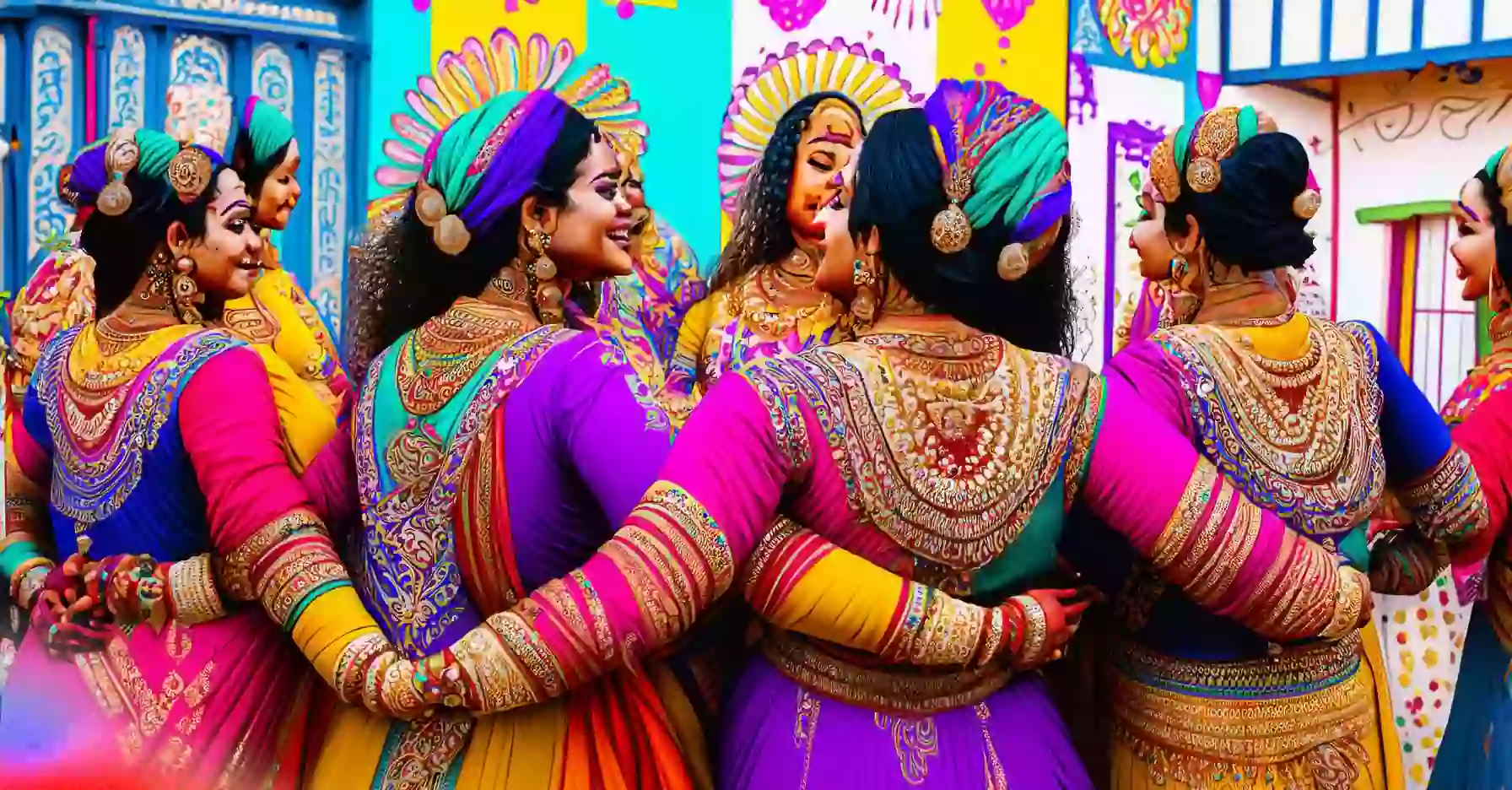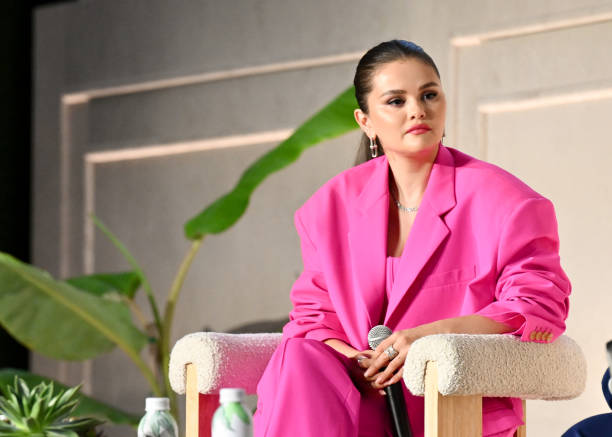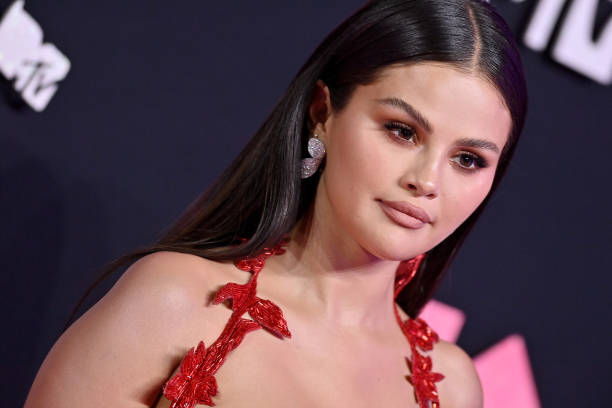India is a country known for its rich cultural heritage and unique customs and traditions that have been followed for thousands of years. These traditions and customs are an integral part of Indian culture that bind people together.
Some of the unique customs and traditions in Indian culture include festivals, cuisine, classical and folk music and dance, myths and customs related to marriage etc. Understanding the unique customs and traditions in Indian culture offers a deeper insight into the ethnically diverse fabric of the country.
The core foundation of Indian culture lies in its tradition and rich heritage that is several thousand years old. According to historians and experts, Indian culture is about 10,000 years old, making it one of the oldest cultures in the world.
Over the years, different periods in history have shaped Indian culture – the ancient Indus Valley civilization, the Vedic period, invasions from Central Asia, the rule of the Mughal empire and later by the British.
All these influences collectively shaped the customs, traditions, lifestyle, beliefs and practices of India. The customs and traditions differ from one part of the country to another, yet living in harmony with each other.
unique customs and traditions in Indian culture
India is a land of rich cultural heritage which is a blend of customs, traditions, lifestyle, values, beliefs, religion, languages, rituals, cuisine, etc. of different religions and groups. Indian culture is one of the oldest cultures and has undergone significant changes since its inception during the Indus Valley civilization some 4000 years ago.
Several invasions and colonization has enhanced the Indian culture greatly. Despite globalization, Indian culture has retained its uniqueness and traditional value system. The unique customs and traditions in Indian culture are discussed as follows:
Festivals
India is known as the land of festivals as people from different religions coexist harmoniously here. There are numerous festivals celebrated by people of different faiths across the country which involves rituals, feasting, fasting, prayers, rituals, etc.
Diwali, Holi, Dussehra, Eid, Guru Nanak Jayanti, Mahavir Jayanti, Buddha Purnima, Christmas are some of the popular festivals of India which are celebrated with enthusiasm. The traditions, customs and celebrations vary from region to region within the country, yet the zeal and fervor remain unmatched.
Arts and Classical Dances
India has a very rich tradition of arts and classical dances which is unique to the country. Different classical dance forms like Kathakali, Bharatnatyam, Kuchipudi, Kathak, Manipuri, Odissi, Chhau, Mohiniattam, etc. have evolved over centuries and continue to thrive.
These dance forms are mentioned in ancient Indian scriptures and are based on mythology. The classical dances have traditions and customs like wearing ankle bells, masks, costumes, and face makeup which are unique. Folk dances are equally popular and an inseparable part of Indian culture.
Music
India has a diverse music heritage as well which is unique in its style. Classical music traditions like Hindustani music and Carnatic music have improvised and emphasized tremendously over ages. It is interesting to note that the music is passed on from teachers to disciples in the gurukul tradition, maintaining its authenticity.
The classical music is based on melodic patterns called ragas which create a unique mood. Indian classical music customs like singing with hand movements and gestures make it uniquely enjoyable. Folk music like Lavani, Baul, Bhangra, Bihu, etc. are equally enchanting.
Marriage rituals
The rituals and customs of Indian marriage differ from community to community across the length and breadth of the country yet remain unique to Indian traditions. Arranged marriage is very common where family members are involved throughout the process. Customs like engagement, sangeet, mehendi, etc. are hosted by families.
The bride and groom wear traditional costumes, apply turmeric paste, etc. as per traditional beliefs. The wedding rituals involve mantras, vows, saptapadi or saat phere, etc. which are uniquely Indian. These traditions bind the families together in a common thread.
Cuisine
India has a diverse cuisine varying with regions and is unique in its use of spices, flavors and cooking methods. Cooking styles vary from region to region like chettinad, Hyderabadi, Rajasthani, Kashmiri, Bengali, Maharashtrian, Gujarati, etc.
The popular Indian breads like naan, tandoori roti, poori, bhatura, stuffed parathas are famous worldwide. Sweet dishes like rasgulla, gulab jamun, rasmalai, payasam, mysore pak, etc. are uniquely Indian. Customs like eating food while sitting on the floor, eating food without cutlery, etc. are integral to Indian food culture.
What are some unique Indian customs and traditions?
India has a rich cultural heritage characterized by many unique customs and traditions that have evolved over thousands of years.
Some of the most notable ones include vibrant festival celebrations, rituals and customs related to marriage, diverse classical and folk art forms, spiritual practices, culinary traditions, traditional healing practices like Ayurveda and yoga, ancient games like chess and kabaddi, royal heritage and etiquette practices, diverse clothing and jewelry styles, and many more.
These traditions reflect the diversity of influences that have shaped Indian culture over centuries. The customs vary greatly across different parts of India but have their roots in history and religion. They provide continuity to Indian culture and serve as symbols of India’s vibrant traditions.
How do Indian customs and traditions reflect the country’s diversity?
India is a vast country with 29 states, each having distinct languages, customs, attire, cuisine and cultural identities. Yet underlying this diversity is a common thread of Indian values embodied in customs and traditions.
For instance, festivals like Diwali, Holi and Durga Puja are celebrated pan-India but the rituals vary. Similarly, classical art forms originate from different regions but are patronized nationwide. India’s multitude of languages have an underlying unifying base of Sanskrit.
Clothing varies from dhoti-kurta to lungis to mekhela chadors but sarees unite women nationwide. People from all faiths including Islam, Sikhism, Christianity, Jainism and Buddhism coexist peacefully.
The ‘unity in diversity’ concept is reflected in how Indian customs have local variations yet retain an essence of Indianness binding the social and cultural fabric.
What role do festivals play in Indian culture?
Festivals are integral to Indian culture as they are closely aligned with religious beliefs, practices and mythological stories. Diwali signifies triumph of good over evil, Holi marks the end of winter and onset of spring, Dussehra celebrates the victory of Lord Rama over Ravana, and so on.
Festivals have traditional rituals, cuisine, dances, music, attire, colors and customs attached to them. They hold great social and religious significance as people bond with family and community during festivals.
Irrespective of faith, all Indians enthusiastically participate in festivals which break the monotony of routines. They rejuvenate social bonds, represent culture and bring people together.
#4. How do Indian customs and traditions vary by region?
India’s astounding diversity across regions is reflected in varying customs and traditions. In terms of attire, northern India has salwar kameez, sarees are worn pan-India, mundus are popular in Kerala while lungis are common in south.
Food habits differ like rice in south, rotis in north, fish in east. Marriage rituals in south involve the thali ceremony, north has chuda ceremony, Maharashtrian weddings have sakharpuda exchange. Classical dance forms like Kathakali, Theyyam, Bhangra, Garba also originate and thrive regionally.
Linguistic differences lead to unique festivals like Onam, Bihu, Pongal specific to certain states. Yet nationally celebrated festivals like Diwali, Holi, Eid see regional variations in customs. Indian traditions have an interwoven commonness and regional uniqueness at their core.
What are some common symbols in Indian culture?
Some widely recognized symbols reflecting India’s cultural identity and traditions are – the saffron, white and green tricolor national flag, the Ashok Chakra, statues of Gandhi, the lotus flower which is India’s national flower, the tiger as national animal, the peacock which is the national bird, the mango as national fruit, the 5,000 year old banyan tree, the river Ganges, yoga and Ayurveda for health and wellness, traditional attires like sarees and dhoti-kurta, henna or mehendi, common greetings like Namaste, spiritual symbols like Om and Swastika, and symbols of faiths like Sikh Khanda, Hindu Aum, Jain swastika. These intrinsic symbols unite the diverse Indian culture.
How do Indian customs and traditions influence daily life?
Indian customs and traditions have a visible impact on daily Indian lifestyle and culture even today. Family values, respect for elders, hospitality, festivals, food habits like vegetarianism, non-violence, spirituality through yoga and meditation, cleanliness, rituals and rites of passage all originate from traditions.
Elders are respected by touching their feet, festivals are celebrated with rigor, traditional food is preferred, classical arts like music and dance are pursued as hobbies, traditional medicine systems like Ayurveda and Siddha are still popular.
Indians wear ethnic clothes on important occasions. Despite modernization, traditions subconsciously influence Indians in small ways every day.
What are some traditional Indian foods and their significance?
India has a rich culinary legacy known for its use of spices, flavors and aromas. Staples like rice South Indian dosas, idlis, uttapams are made from lentil and rice batter. Rotis, naan, tandoori cooking, kebabs are common in North.
Fish and seafood are relished on the East and West coasts. Traditional sweets include rasgulla, ladoo, jalebi, kulfi. Food is also associated with festivals like gujiya on Diwali, saffron flavored milk or bhang on Holi.
Spices like turmeric, cardamom, cinnamon, pepper and clove are used extensively. Food also has regional and religious significance. The traditional food habits promote health and reflect the diversity of Indian culture.
How do Indian customs and traditions impact family life?
Traditions play a central role in Indian family life. Elders are respected and cared for within joint families. Patriarchal households with male dominance are common. Arranged marriages with parental consent are still widely practiced.
Names, surnames and even food habits reflect caste and community affiliations. Traditional gender roles are prevalent like women primarily rearing children and handling household chores. Festivals and rituals unite families.
Worshipping together, elders guiding young children, family bonds being prioritized are effects of cultural values on Indian families. However, urbanization and modernization are bringing generational changes in family traditions.
What are some traditional Indian dances and their origins?
Classical dance forms like Bharatnatyam, Kathakali, Kathak, Manipuri, Kuchipudi, Odissi and Mohiniyattam have ancient origins in temple rituals and Hindu mythology. Bharatnatyam originated in Tamil Nadu while Kathakali belongs to Kerala. Kathak originated in North India.
Folk dances showcase cultural nuances of different states – Chhau of Jharkhand and Odisha, Bihu of Assam, Garba of Gujarat, Kalbelia of Rajasthan. Dances depict regional tales through costumes, music and movements.
The Sangeet Natak Akademi and guru-shishya paramparas promote classical dances. The traditional dances showcase the diversity of artistic traditions across India.
How do Indian customs and traditions influence fashion?
Indian traditional attire and jewelry for women like saris, ghaghra cholis, salwar suits with bindis, bangles, nose pins reflect customs linking clothing with femininity, modesty and ethnic chic.
Traditional male attire like dhoti-kurta, sherwani, lungi show customs of modesty and masculinity. Fabrics used include cotton, silk, chiffon, georgette. Ornaments are intricate and made from gold, precious stones with motifs like peacock, mango representing luck, fertility and prosperity in marriage.
Specific styles like Maharashtrian nauvari sari, Gujarati ghaghra depict regional diversity. Tattoos, henna and face decorations also demonstrate Indian traditional fashion culture. Despite Western influences, traditional clothing endures in modern Indian fashion.
What are some traditional Indian martial arts?
India has a myriad of ancient martial arts traditions developed in various regions and patronized by kings and warriors historically. Kalaripayattu from Kerala uses swordplay and weapon based fighting with roots in Hindu mythology.
Gatka from Punjab uses swordsmanship combined with spiritual rituals. Mardani khel stems from northern India with footwork and wrestling prominence. Thang-ta from Manipur combines sword, spear skills with hand combat.
Silambam from Tamil region uses stick fighting techniques. Kokh, also called kushti, is rooted in mud wrestling. Martial arts like kalaripayattu are mentioned in ancient Indian epics as part of warrior training. Today these arts promote fitness along with cultural preservation.
How do Indian customs and traditions impact language?
India’s linguistic diversity is vast with 22 official languages and thousands of dialects. Yet customs unite languages under the common Sanskrit-based Indo-Aryan and Dravidian language families.
Customary practices include using traditional greetings like Namaste, Adaab etc. Elders are addressed using terms like ji and ayah to show respect. Scripts originating from Brahmi script like Devanagari and Tamil scripts boast India’s linguistic history.
Languages adapt words and phrases from English and other global languages to remain culturally progressive. The Constitution upholds language diversity. Customs like asking or sharing names, food habits, festivals, etc. involve conversational linguistic traditions that strengthen culture and identity.
What are some unique Indian wedding customs?
Indian weddings involve many customs and rituals like roka, sangeet, mehendi, haldi that span days. Brides wear red, gold wedding attire while grooms wear sherwanis. Customs like jaimala (garland exchange), seven pheras around sacred fire and sindoor and mangalsutra signify Indian marriage traditions.
Hema, nisha ni achar signifies welcoming the bride in Gujarati culture. In South India, thali is tied to signify marriage. Saat phere in North and kanyadan are other unique Hindu customs.
Muslim weddings involve nikaah and mehr. Sikhs perform lavaan and anand karaaj. Indian weddings involve family customs and ancient traditions in vibrant ways.
How do Indian customs and traditions influence art and music?
Classical art forms like Bharatnatyam originated in temples as spiritual art. Folk music and dances signify tribal and rural cultures. Hindustani and Carnatic music have roots in ancient ragas and talas.
Art forms emphasize epithets and symbolism of deities and scriptures. Kalamkari, Madhubani, Warli art styles portray religious themes through their motifs. Music, dance and dramas traditionally narrate mythological tales during festivals and special occasions, keeping legends alive through generations.
Traditional Indian art symbolizes spiritual ideals like truth, discipline and the triumph of good over evil. Regional diversity in art and music reflects India’s cultural plurality.
What are some traditional Indian musical instruments?
The veena, sitar, sarod, santoor, sarangi and bansuri (flute) are some traditional Indian instruments used in classical Hindustani music from North India. Instruments like tabla, mridangam, ghatam, kanjira are used in Carnatic music originating from South India.
Each instrument falls in percussion, string or wind categories. Folk music uses eclectic regional instruments like ektara, dotara, ravanhatta, kamaicha, khartal and dholak. Baul singing uses ektara. Dhol drums are integral to Bhangra.
Traditional instruments use materials like gourds, bamboo, coconut shells, clay, brass and animal skin. Playing music with traditional instruments is still popular in India as a vital artistic tradition.
How do Indian customs and traditions impact spirituality?
Spirituality inherently governs traditions in India through religion. Rituals, rites of passage, festivals, pilgrimages contextualize faith in daily life. Customs like lighting oil lamps, chanting prayers, morality epics impactthinking.
Diwali signifies triumph over ignorance through light. Meditation traditions promote spiritual growth. Yoga and Ayurveda also have spiritual origins. Principles like ahimsa, vegetarianism, belief in karma and rebirth spiritually guide lifestyle.
Guru-shishya parampara teaches spirituality. The traditional Indian family upholds values like satya, dharma, shanti. Intricately linked with faiths, these timeless traditions define India’s spiritual identity.
What are some traditional Indian games and sports?
Historically India has nurtured many traditional sports and games. Wrestling, horseback archery, chess, playing cards, chariot racing and boat racing were royal sports historically. Ancient games like kabaddi, kho kho, gilli danda are still played.
Mallakhamb using wooden poles originated in Maharashtra. Martial arts like kalaripayattu, silambam, gatka involve weaponry and combat. Yogasana was traditionally perfected for inner wellness rather than sport.
Swimming, rowing, cycling, running and pole climbing have rural beginnings. Cricket, hockey, football were introduced sports which are now popular across urban and rural India. With globalization, traditional sports are being revived through initiatives like the Khelo India scheme.
How do Indian customs and traditions impact education?
Historically, the guru-shishya parampara of oral learning defined the culture of education. Students resided in ashrams, often from childhood, imbibing moral values along with knowledge from revered gurus.
Ancient scriptures, treatises, texts were memorized through studying out loud. Discussion, debates and interactive learning were emphasized. Co-education was not encouraged. Education focused on duty, discipline and service rather than career.
Legacies like Nalanda University, Takshashila centres of excellence and Sanskrit language shaped traditions. Today these traditions guide the educational ethos blending tradition with modern curriculum and pedagogy.
What are some unique Indian cultural practices related to health and wellness?
India’s traditional systems like Ayurveda and Siddha form the cultural backdrop for unique health practices. Use of spices like turmeric, fruits, vegetables and herbs as home remedies is common. Yoga asanas and pranayam are traditionally practiced for inner wellness.
Meditation and spiritualism alleviate mental stresses. Massages with oil and therapy techniques like shirodhara restore health naturally. Suryanamaskar and yoga maintain fitness. Traditions like barefoot walking, eating from the ground enhance connectivity.
Fasting rituals and vegetarianism form cultural health practices. Traditional medicine provides natural remedies and holistic healing benefiting community health and wellness.
How do Indian customs and traditions impact gender roles?
Indian society has been patriarchal with traditional gender roles for men and women. Men took family decisions while women handled household and nurturing duties. Co-education was limited. Brides moved to the husband’s home after marriage.
Traditional attire like saris signified femininity. Women focused on caregiving roles. However, matriarchal societies also exist in India where ancestral property passes from mother to daughter.
With progress in literacy and legal rights, women now access education, join the workplace and army while nurturing cultural values. Gender roles are evolving yet still influenced by traditional mindsets and customs.
What are some traditional Indian folktales and their significance?
India has a rich oral tradition of folktales which often have associated morals and wisdom. Tales of Panchatantra, Jataka, Hitopadesha and Akbar-Birbal have entertained generations and provided cultural wisdom.
The stories often depict talking animals like tigers, elephants, jackals in narratives that end with moral guidance. Common folklore also includes myths and legends associated with gods and goddesses. Classical epics Ramayana and Mahabharata blend history with moral philosophy through engrossing narratives.
Fables are narrated to inculcate virtues in children. Local narratives called naatukatha aim at community education. Folk music and plays have also preserved local tales over centuries. These impart cultural education and regional wisdom.
How do Indian customs and traditions impact business and commerce?
Certain business customs can be traced to ancient Indian mercantile communities and guilds or shrenis. Norms like honesty in trade, standardized weights-measures, and pricing evolved. Familial and communal ties boosted cooperation.
Coins were minted. Complex taxation and banking methods indicate strong financial knowledge systems. Trading communities like Marwaris and Chettiars followed traditional vocations and flourished. Bundelas were miners and metallurgists.
After liberalization in the 1990s, Indian customs have adapted to modern business concepts, yet retaining traditional ethics. Family businesses thrive. Startup culture is nascent but growing steadily. Indian business values are integrating both traditional and modern principles.
What are some unique Indian cultural practices related to agriculture?
Agriculture has been integral to Indian civilization since early Indus Valley periods. Farming practices were documented in texts like Varahamihira’s Brihat Samhita. Traditions like worship of earth, water conservation, fertility festivals, nature veneration associated farming with religion.
Rice cultivation shaped unique traditions in coastal, eastern and southern India. Spices, medicinal plants, herbs were cultivated extensively. Irrigation innovations like stepwells accessed groundwater.
Oxen and cattle were valued as essential farming partners. Traditional tools, organic methods, seed preservation techniques have prevailed over centuries. Community agricultural practices involving songs and celebrations at planting-harvest foster social cooperation even today.
How do Indian customs and traditions impact social hierarchies?
The caste system historically divided Indian society into a hierarchy based on occupations. Brahmins were priests and teachers, Kshatriyas were rulers and warriors, Vaishyas were businessmen while Shudras were laborers.
‘Untouchables’ fell out of the varna system. Marriages were confined within castes and inter-caste interactions restricted. Though legally abolished, elements of caste discrimination linger – mainly in rural communities.
Customs like surname-based identification of caste persists. Positive aspects include the communal identity within castes. Progressive social reforms and urbanization have reduced caste inequities considerably. Many traditions now cut across castes binding society.
What are some traditional Indian crafts and their significance?
India boasts an ancient heritage of handicrafts steeped in tradition and cultural symbolism. Varanasi silk and Banarasi sarees use zari work. Intricate Madhubani paintings depicted ritual motifs. Odisha’s applique work portrays Lord Jagannath.
Kashmir and Kanchipuram are known for silk saris. Scenic phulkari embroidery originated in Punjab. Blue pottery, lac bangles, gold thread zardozi use regional styles. Terracotta, bamboo craft, papier mache, channapatna toys each represent local culture.
Craftsmanship signifies community skill. With global exposure, crafts have become fashionable Indian souvenirs and trade items. Craft fairs and boutiques now keep traditions alive.
How do Indian customs and traditions impact environmental conservation?
Respecting nature and living in harmony with the environment are intrinsic principles guiding traditional Indian lifestyle. Rivers are revered and worshipped. Trees like peepal, banyan are sacred. Festivals like Holi mark the onset of spring.
Wildlife like snakes, monkeys, elephants, cows are protected with temples or groves. Water conservation methods like stepwells and tanks reflect sustainability. Villages grow fruit, crops as per local climates and food habits.
Though rapid development challenges conservation now, classical Indian values promoted environmental balance. Forest dwellers retain sustainable practices. With awareness, eco-traditions are being revived through organic farming, afforestation and renewable energy.
What are some unique Indian cultural practices related to spirituality?
Spiritual traditions deeply govern Indian culture and daily life. Rituals like lighting lamps, chanting prayers, temple visits, festivals contextualize faith. Scriptural study, service and non-violence are moral ideals.
Ashrams propagate spirituality through yoga, meditation, discourses, kirtans and guru upasana. The guru-shishya parampara hands down wisdom. Chanting mantras, devotional singing, pilgrimages, austerity and vegetarianism represent spiritual practices. Disciplines like yoga, Sufism, tantra aid self-realization.
Concepts like moksha, karma, dharma shape worldviews. Diverse practices from faiths cumulatively construct India’s spiritual heritage. Customs like blessings from elders, worship and festivals integrate spirituality into lifestyle.
How do Indian customs and traditions impact travel and tourism?
India offers culturally and spiritually enriching experiences through travel which sustains tourism. The natural landscape dotted with heritage sites, vibrant festivals, cuisines, music, art and attire showcase a diverse cultural potpourri to tourists.
Spiritual tourism draws people to ashrams and pilgrimage sites like Vaishno Devi and the Kumbh Melas. During homestays, travellers experience local customs first-hand. Folk performances provide entertainment. Tourism fosters national integration while boosting the economy.
Demand for tour guides keeps local storytelling traditions alive. With growing global interest, Indian tourism must balance social and ecological impacts while spreading cultural awareness sensitively.
What are some traditional Indian forms of storytelling?
India has a vibrant oral storytelling culture manifested through folklore, fables, parables and regional narratives. The ancient Jataka tales have endured through dance and drama interpretations.
Rajasthani folktales often involve historic wars and rulers. Humorous Akbar-Birbal stories were didactic. Myths explicate moral principleswhile narrating the adventures of gods and heroes. Ancient epics Ramayana and Mahabharata remain popular through regional variations.
Folk theatre and ballads disseminate community stories, often with tricks and motifs to memorably impart wisdom. Stories occasionally have dialects, songs or mime movements. Indian grandmothers excel at narrating folk tales and mythological stories to children even today.
How do Indian customs and traditions impact technology and innovation?
India has an ancient legacy in science and technology documented in texts like Sushruta Samhita and Arthashastra. The Indus Valley had advanced town planning and civilization science. Ancient medicine, metallurgy, ship-building, water systems involved innovative applications of principles.
Chess and the numeral system developed in India. Architecture mastered design nuances as seen in cave temples and stepwells. This science heritage catalyzed modern innovations like vaccines, plastic surgery pioneered by Indians.
With global technology dominance, Indian culture continually adapts. For instance, digital payment systems are expanding while festivals are celebrated enthusiastically. India provides unique, economical technological solutions that make science accessible for societal welfare.
What are some unique Indian cultural practices related to animal welfare?
A core ethos of Indian traditions is harmony between humans, animals and nature. Wildlife like elephants, peacocks, monkeys, cows, snakes are revered with temples or groves for habitat protection. Vegetarianism arises from non-violence principles.
Ahimsa philosophy opposes animal sacrifice and advocates ethical treatment of all living beings. Conservation empowerment of local communities minimizes human-animal conflicts. Stories depicting kinship between animals and humans abound in folklore and mythology.
Festivals like Nagpanchami honour snakes. Rituals prevent inbreeding of cattle stocks. Though rapid development challenges this eco-equilibrium now, compassion for voiceless creatures is integral to Indian culture.
How do Indian customs and traditions impact international relations?
Historically Indian customs promoted harmonious foreign relations by respecting cultural differences. Exports of cotton, spices, tea, opium and indigo through trade built political ties and prosperity.
Spread of Buddhism through South and Southeast Asia was benign. Customs like vegetarianism and non-violence philosophy manifested as non-aggression. Yoga and Ayurveda were shared for welfare.
Democracy, pluralism and inclusivity in the age-old Indian worldview strengthens soft power diplomacy today. However, colonialism and wars engendered resistance and quest for self-determination.
In modern times, cultural cooperation through festivals, food, fashion, music and yoga continue to shape global relations and inter-country friendship bilaterally and through diaspora networks.
What are some traditional Indian forms of theater?
India enjoys a rich legacy of colorful regional theater traditions that blend folklore, music and dance. Classical Sanskrit theater origins can be traced back over 2000 years. Folk theatre incorporates local dialects, costumes and expressions using minimalist props and storylines from mythology, current affairs or history.
Some examples are Nautanki from North India, Bhavai from Gujarat, Tamasha from Maharashtra and Yakshagana from Karnataka. Jatra folk dramas use dance and poetic dialogues to depict deities and daily struggles.
Raslila enacts the divine love story of Radha-Krishna. Contemporary Indian theater blends classical with urban aesthetics and experimental themes for an evolving cultural identity.
How do Indian customs and traditions impact social justice?
Indian culture has an inherent inclusive ethos of social equality through various teachings. The Vedas emphasize duty and justice. Epics extol right over might. Bhakti movement saints rejected caste barriers.
Sikh Gurus promoted communal harmony. sufism denounced religious divides. Reformers like Raja Ram Mohan Roy campaigned against sati ritual and child marriage. Dr B R Ambedkar architected the constitution upholding equality.
Democracy and secularism help disadvantaged communities through reservation in jobs and education. Customary Indian values of Ahimsa, ethics, truth and non-discrimination fundamentally shape the progress towards an equitable society.
What are some unique Indian cultural practices related to astronomy and astrology?
India has a long tradition of astronomical study documented in texts such as Aryabhatiya, Siddhanta Shiromani, Pancha Siddhantika. Concepts like lunar mansions and solar motion originated in ancient India.
The astronomical observatory at Delhi during the Tughlaq dynasty had ingenious instruments. Festivals are scheduled through traditional calendars based on planetary positions. Eclipse prediction, cosmology study and sun worship rituals represented astronomy knowledge systems.
Jyotisha aspects of Vedic astrology that studies planetary alignments remain popular today for key life decisions like marriage, naming of newborns, etc. Astrology and fortune-telling practices reflect the cultural outlook associating human life events with cosmos mysteries.
How do Indian customs and traditions impact the entertainment industry?
India’s entertainment industry and popular media foray maintains strong cultural connect through incorporating traditions and drawing creative inspiration from mythology, literature, folklore and music. Recipe, lifestyle and travel shows promote regional cultures.
Adapting books into movies and shows brings classical narratives to life while spreading awareness. Casting now spotlights diversity. Stand-up comedy integrates regional humor. Reality shows showcase community talent and indigenous artistry like pottery, weaving, etc.
Cinema songs and dance convey social messages through art forms. Indian media integrates global formats with traditional sensibilities for impactful, meaningful diversion that both entertains and educates.
What are some traditional Indian forms of visual art?
Classical Indian art includes ancient cave paintings belonging to the Ajanta-Ellora, Bagh, Badami and Sittannavasal traditions depicting nature, deities and lifestyle scenes through natural dyes.
Intricately sculpted stone temples like Khajuraho showcase fine ornamentation and motifs. Miniature paintings prevail across folk and classical schools – Kangra, Rajput, Tanjore, Mughal. Ritual Madhubani paintings have floral-geometric motifs.
Kalighat paintings portray deities in scenery. Warli drawings use triangle shapes. Rangoli floor art during festivals manifests heritage. Traditional visual arts integrate spiritual themes, regional nuances and skilled techniques as part of India’s aesthetic heritage.
How do Indian customs and traditions impact the education of children?
India traditionally emphasized holistic education and grooming children in family values, social duties and broad world perspective. Ancient ashrams and gurukuls focused on building strong character through philosophy, theology, language, arts, reasoning, wrestling, archery.
Memorizing texts instilled discipline. Corporal punishment was avoided and gurus instead taught through examples, dialogues and moral stories which is still practiced.
Folk arts, regional games impart cultural knowledge Enjoyably. Modern schooling blends this traditional emphasis on values with a structured curriculum, co-education and career-readiness, thereby shaping children into responsible citizens.
What are some unique Indian cultural practices related to spirituality and meditation?
Spiritual traditions have profoundly defined Indian culture over millennia and are maintained through unique practices today. Ashrams like Rishikesh popularize yoga, pranayama, meditation globallly. The guru-disciple relationship propagates wisdom. Pilgrimages to mountains like Kailash-Manasarovar signify sublime experience.
Daily worship and rituals at home maintain connectivity with the divine. Chanting of Sanskrit mantras, singing devotional hymns elevate consciousness. Disciplines like yoga and tantra guide enlightenment through postures, mudras and techniques.
Solitude, silence, fasting and austerity purify the body and mind. Scriptural study and scholarly debates impart knowledge. These diverse customs sustain India’s spiritual identity even today.
How do Indian customs and traditions impact the global community?
Many intrinsic Indian traditions have become universally relevant in a culturally interconnected world. Yoga and meditation are globally popular for wellness. Spiritual tourism to ashrams allows cultural immersion. Ayurveda and traditional medicine provide natural healing alternatives.
Indian cuisine is relished for its aromatic curries and exotic spices. Tile art, fabrics, jewelry and crafts infuse heritage into modern design aesthetics internationally. Classical dances, music forms and martial arts get global platforms.
Films, festivals and fashions showcase India’s pluralistic landscape. Key customs like non-violence, truth, vegetarianism and Vasudhaiva Kutumbakam reflect universal brotherhood. India’s age-old cultural wisdom thus benefits humanity cross-culturally.
Conclusion:
The unique customs and traditions of India form the soul of its culture and heritage that binds people together through a sense of belonging and unity in diversity. These traditions transcend regional and social boundaries and often provide a window into the history of the subcontinent.

The customs, traditions and values associated with families, festivals, arts, attire, cuisine, lifestyle and rituals are unique to India and deeply enrich the lives of Indian people.
Though globalization has introduced several modern elements, many unique customs and traditions continue to be an integral part of everyday life in India. They reflect the rich history and cultural diversity of the country and must be nurtured to retain India’s unique cultural identity in the modern world. Consider reading >>>>> The Tradition of Vedic Chanting Contribution to Indian Culture to learn more.
I am an accomplished author at Fact Finders Company LLC, a renowned publishing house based in New York City. With a passion for research and a talent for writing, I have contributed to numerous non-fiction titles that explore a wide range of topics, from politics and history to science and technology. My work has been widely praised for its accuracy, clarity, and engaging style. Nice Reading here at Fact After Fact.








